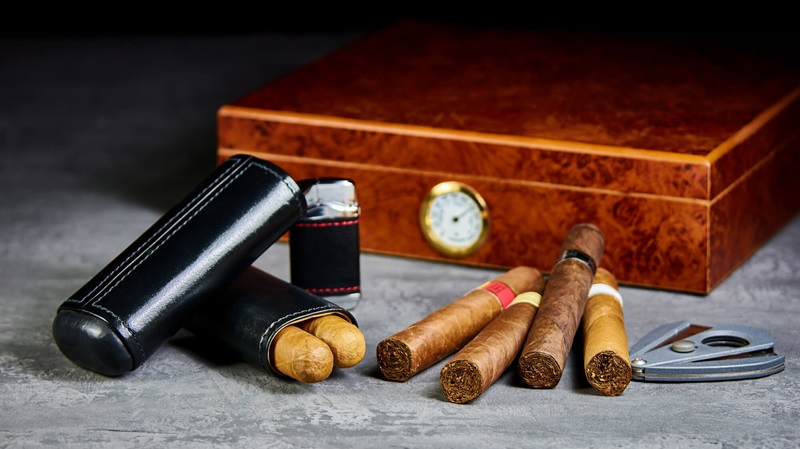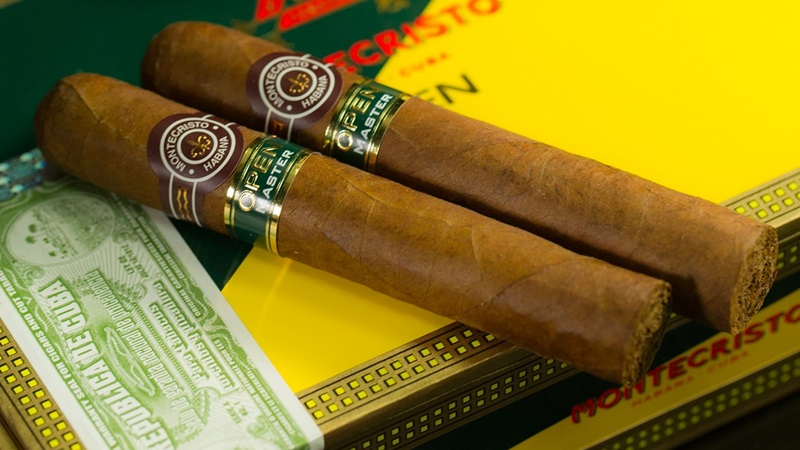Early Storage Methods for Tobacco: The Origins of Humidors
Early storage methods for tobacco date back to the 16th century when tobacco first gained popularity in Europe. Initially, tobacco was stored in clay pots or wooden barrels, but it was soon discovered that these methods did not provide the ideal environment for preserving the flavor and quality of the tobacco.
As a result, the concept of the humidor was born. The earliest humidors were simple wooden boxes lined with Spanish cedar, a wood known for its ability to absorb moisture and regulate humidity levels. These early humidors were often used by sailors and traders to keep their tobacco fresh during long voyages across the sea.
Over time, humidors evolved into more sophisticated designs, with built-in hygrometers to measure humidity levels and trays to separate different types of tobacco. The Spanish cedar lining became a standard feature in humidors, as it not only helped maintain the ideal humidity but also imparted a subtle flavor to the tobacco.
Today, humidors are considered an essential accessory for any cigar enthusiast. They come in a variety of sizes and styles, from small desktop humidors to large cabinet humidors capable of storing hundreds of cigars. Despite advances in technology, the basic principles of humidification remain the same, ensuring that tobacco is kept in optimal condition for smoking. The humble humidor continues to play a vital role in preserving the heritage and tradition of tobacco storage.

The Birth of the Modern Humidor: Innovations Through Time
The birth of the modern humidor can be traced back to the 19th century, when cigars became increasingly popular among the elite. At that time, cigar aficionados needed a way to properly store and preserve their precious cigars, leading to the development of the first rudimentary humidors. These early humidors were often simple wooden boxes lined with Spanish cedar, which was known for its ability to regulate humidity and prevent cigars from drying out.
As the popularity of cigars continued to grow, so did the demand for more advanced humidors. In the early 20th century, innovative designs and technologies began to emerge, such as the introduction of electronic humidification systems and hygrometers to monitor humidity levels. These advancements allowed cigar enthusiasts to better control the conditions in which their cigars were stored, ensuring they remained fresh and flavorful.
Today, the modern humidor has evolved into a sophisticated piece of equipment, with state-of-the-art features such as digital hygrometers, temperature control systems, and even Wi-Fi connectivity for remote monitoring. These advancements have revolutionized the way cigars are stored and preserved, allowing enthusiasts to enjoy their favorite smokes with confidence and peace of mind.
Innovations in humidor technology continue to push the boundaries of what is possible, with new materials and designs constantly being developed to improve the storage and aging of cigars. The birth of the modern humidor has truly transformed the way we enjoy and appreciate cigars, ensuring that they remain a cherished luxury for generations to come.
Cultural Significance of Humidors in Different Eras
Humidors have played a significant role in different eras, serving as a symbol of luxury and sophistication. Dating back to the 19th century, humidors were used to store and preserve cigars, a popular pastime among the elite. These ornate wooden boxes were often adorned with intricate designs and served as a status symbol for those who could afford them.
In the early 20th century, humidors became even more popular as smoking cigars became a social norm among the upper class. They were often given as gifts to business associates and friends, symbolizing camaraderie and wealth. During this time, humidors were also used as a way to display one’s collection of cigars, showcasing the owner’s refined taste and appreciation for quality tobacco.
In the modern era, humidors continue to hold cultural significance, albeit in a slightly different context. While cigar smoking has become less common, humidors are now seen as a collector’s item, with enthusiasts seeking out rare and unique pieces to add to their collections. Additionally, humidors are still used to store and preserve cigars, ensuring they maintain their flavor and quality over time.
Overall, humidors have evolved over the years, but their cultural significance remains intact. Whether as a symbol of luxury, camaraderie, or collector’s item, humidors continue to hold a special place in the hearts of cigar enthusiasts around the world.

Materials and Craftsmanship: How Humidors Evolved Over Centuries
Humidors have a long and fascinating history that dates back centuries. Originally used by the indigenous people of the Americas to store tobacco leaves, humidors have evolved significantly over time in terms of both materials and craftsmanship.
In the early days, humidors were typically made from materials such as wood, clay, or metal, with the primary goal of keeping tobacco leaves fresh and moist. As the popularity of tobacco grew, so did the demand for more sophisticated humidors. Craftsmen began to experiment with different materials and techniques to create humidors that were not only functional but also aesthetically pleasing.
One of the most significant advancements in humidors came in the 19th century with the invention of the cigar humidor. These specialized humidors were designed specifically to store cigars, using a combination of cedar wood and a humidification system to maintain the perfect level of moisture. The craftsmanship involved in creating these humidors was meticulous, with attention to detail paid to every aspect of the design.
In modern times, humidors have continued to evolve, with advancements in technology leading to the development of electronic humidors that can regulate humidity levels automatically. Despite these advancements, many aficionados still prefer the traditional craftsmanship of a handcrafted humidor made from high-quality materials.
Overall, the evolution of humidors over centuries is a testament to the ingenuity and skill of craftsmen throughout history. From simple storage containers to sophisticated works of art, humidors have come a long way and continue to be an essential accessory for tobacco enthusiasts around the world.
Iconic Humidors in History and Their Legacy
Humidors have served as both functional and decorative pieces throughout history, with some iconic designs leaving a lasting legacy in the world of cigars. One such example is the Elie Bleu humidor, known for its luxurious materials and intricate craftsmanship. These humidors are often made from exotic woods like ebony and mahogany, adorned with intricate inlays and polished to a high gloss finish. The Elie Bleu humidor has become a symbol of sophistication and elegance, coveted by collectors and connoisseurs alike.
Another iconic humidor that has made its mark in history is the Dunhill White Spot humidor. Designed with a sleek and modern aesthetic, these humidors feature clean lines and minimalist designs that appeal to the contemporary cigar enthusiast. The Dunhill White Spot humidor is often made from high-quality materials like stainless steel and leather, creating a timeless piece that complements any cigar collection.
Despite their differences in design and style, both the Elie Bleu and Dunhill White Spot humidors have left a lasting impact on the world of cigars. Their legacy lives on through their exceptional craftsmanship and undeniable beauty, making them coveted pieces for cigar aficionados around the globe. As these iconic humidors continue to be passed down through generations, their influence on the industry remains as strong as ever, solidifying their place in history as symbols of luxury and sophistication.

